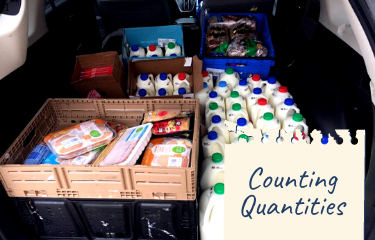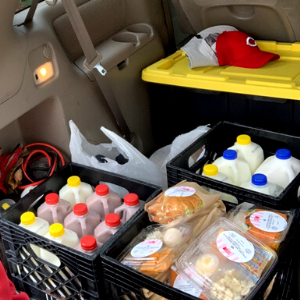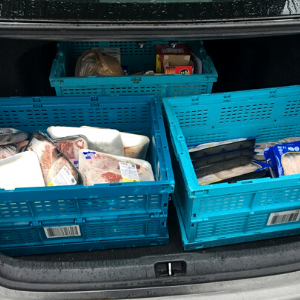
Tips for Counting Quantities
One frequent question our team receives on rescues is how to count boxes and types of food on the quantities screen. To start off, you should know that quantities are always an estimate. We know that pounds rescued in a given car-load could vary up to 20% above or below the exact amount. When you’re talking about hundreds of rescues each week, these minor 20-30 pound differences tend to even out and land within a reasonable estimate. If you post a photo of the food, we also go back and double check the amount you reported to ensure accuracy. However, if we can improve accuracy in the initial reports, we can save a lot of time and effort & put that towards expanding our rescues and delivering more good food! Thanks for your questions & your desire to help us with consistent reporting. Here are some basic guidelines to help get you!
Unfamiliar with the quantities screen? Check out this tutorial here.
1. UDF Rescues
You gave us feedback and we hear you! UDF reporting has now been simplified into two categories: gallons of milk/dairy and boxes of miscellaneous food. The majority of weight comes from milk (about 8# per gallon). We’ve weighed a variety of combinations of UDF “ready to eat” food (sandwiches, salads, donuts) in a box roughly the size of a milk crate and estimate the weight to be about 15 pounds.
If you receive something different than those two categories, such as food in a bag or small boxes of donuts, you can estimate how many square milk crates it would fit into and record that quantity.

This rescue pictured here would be recorded as:
9 gallons of milk/creamer
1 box of any food except milk
2. Castellini Rescues
When rescuing food from Castellini counting by box can be difficult since they can be huge boxes of potatoes or small boxes of berries. You can now report quantities based on the size of box:
Light: such as berries or spinach (estimated 10 pounds)
Medium: such as peppers or zucchini (estimated 20 pounds)
Heavy: such as potatoes or watermelon (estimated 50 pounds)
Busy day at the dock? If you leave all quantities as is, it will default to 300 pounds, which is our average count. Alternatively, you can ask for a bill of lading to have a receipt printed and handed to you with counts of what you received.

This rescue pictured here would be recorded as:
5 Light boxes (for the limes)
11 Medium boxes (for the peppers)
1 Heavy Box (for the wooden crate – cabbage)
3. Kroger Rescues
Kroger rescues are always measured in crates – like the blue ones pictured below, or banana boxes – like those you see in the produce department. If you ever pick up items that are not in a crate, you can estimate how many crates it would fill, or add an item.

This rescue pictured here would be recorded as:
2 crates of frozen meat
1 crate of dairy and other
4. All Other Rescues
We do our best to give you detailed descriptions for rescue items. Sometimes it may say “take as much as you can.” Other times the item may say “take only what’s listed here.” Be sure to read the instructions to know exactly what to pick up & how to report it. Before taking a second load from a site that has excess product, give us a call to make sure you aren’t taking food another volunteer is planning to rescue. Of course, if you’re ever unsure, you can always leave a note in your review or shoot us a text to clarify: 513-449-1698.
Thank you, Food Rescue Heroes, for all you do to make our work possible. We appreciate you!